
Leopold of Schleswig-Holstein-Sonderbourg-Wiesenbourg (Brzeg, 12 January 1674 - Vienna, 4 March 1744) was the 3rd Duke of Schleswig-Holstein-Sonderburg-Wiesenburg and Knight in the Order of the Golden Fleece since 1721.

Leopold of Schleswig-Holstein-Sonderbourg-Wiesenbourg (Brzeg, 12 January 1674 - Vienna, 4 March 1744) was the 3rd Duke of Schleswig-Holstein-Sonderburg-Wiesenburg and Knight in the Order of the Golden Fleece since 1721.
Leopold was the third and last Duke of the House of Schleswig-Holstein-Sonderburg-Wiesenburg. He was the only son of Friedrich (1651–1724) and Karolina of Legnica-Brieg (1652–1707). Leopold succeeded his father as Duke when he died in 1724.
Since 1721 he owned Wetzdorf Castle, which he inherited from his aunt Duchess Magdalena Sophie Eleonora von Schleswig-Holstein (1664–1720), abbess in Quedlinburg. Since 1723 he was also heir to Rohrbach. On 25 June 1723, he acquired from his father for 110,000 thaler, Wiesenburg Castle with the associated lands. Already on 24 January 1725, he sold it for 126,400 thaler to August II of Saxony.
He then went to Vienna, where he was a member of the Imperial council at the court of Charles VI. [1]
Leopold converted to the Catholic faith and married on 3 May 1715 with Princess Maria Elisabeth von Liechtenstein (1683–1744), daughter of Hans-Adam I, Prince of Liechtenstein
They had five daughters :

Joseph Johann Adam was the Prince of Liechtenstein from 1721 to his death.

Peter August Friedrich, Duke of Schleswig-Holstein-Sonderburg-Beck was a Duke of Schleswig-Holstein-Sonderburg-Beck.
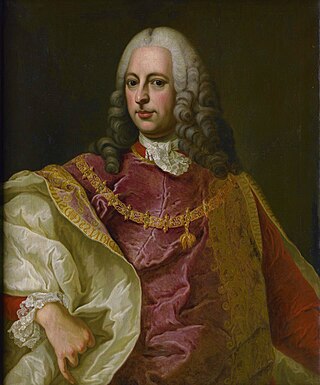
Count Friedrich August von Harrach-Rohrau,, was plenipotentiary minister of the Austrian Netherlands (1732–1741) and became Governor-General ad interim in 1741–1744. He was also High Chancellor of Bohemia from 1745 until his death.
Vincenzo Gonzaga was the reigning Duke of Guastalla and a member of the House of Gonzaga.

Brandenburg-Schwedt was a secundogeniture of the Hohenzollern margraves of Brandenburg, established by Prince Philip William who took his residence at Schwedt Castle in 1689. By appanage, they administered the manors of Schwedt and Vierraden on the Oder river as well as Wildenbruch in Pomerania. Though prosperous, the cadet branch never obtained Imperial immediacy.

Giuseppe Gonzaga was the last reigning Duke of Guastalla and a member of the House of Gonzaga.
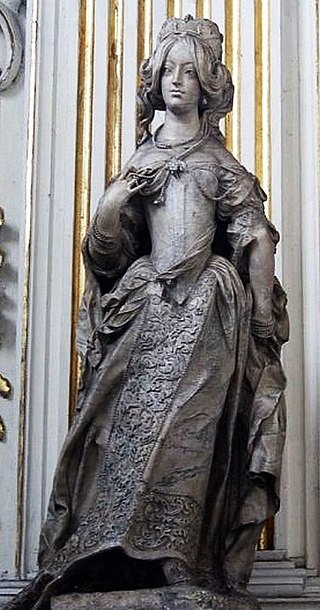
Karolina of Legnica-Brieg-Wohlau, was a Silesian noble, duchess of Legnica, Brzeg and Wołów and the last member of the Silesian Piasts dynasty. She was the eldest daughter of Christian, Duke of Brieg and Louise of Anhalt-Dessau. After the death of her father, she married secretly without the knowledge of her mother on 14 July 1672 to Duke Frederick von Schleswig-Holstein-Sonderburg-Wiesenburg and also became the duchess of Schleswig-Holstein-Sonderburg-Wiesenburg.
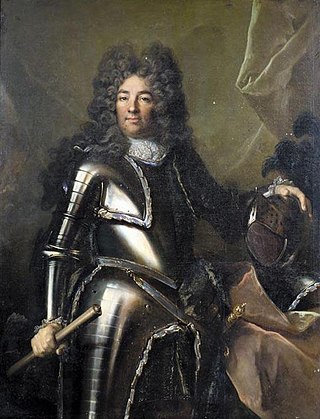
Joachim Frederick of Schleswig-Holstein-Sonderburg-Plön, also known as Joachim Frederick of Schleswig-Holstein-Plön, was the third Duke of Schleswig-Holstein-Plön, a dukedom created by the division of the Duchy of Schleswig-Holstein-Sonderburg.

Hans-Adam I was the son of Karl Eusebius, Prince of Liechtenstein (1611–1684) and Princess Johanna Beatrix of Dietrichstein (1625–1676).

Maria Eleonore of Liechtenstein (néePrincess Eleonore of Oettingen-Oettingen and Oettingen-Spielberg was a princess of Liechtenstein by marriage to Prince Karl Borromäus of Liechtenstein, and a politically influential Austrian salonist. Between 1768 and 1790, she acted as the political adviser of Emperor Joseph II through her salon or discussion circle.
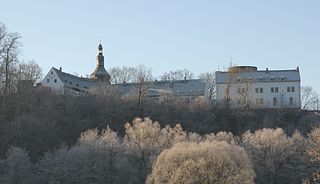
The House of Schleswig-Holstein-Sonderburg-Wiesenburg was one of the many cadet branches of the House of Schleswig-Holstein-Sonderburg, itself a junior line of the Oldenburg dynasty. Although the members possessed the title of duke in Denmark and in the Holy Roman Empire, they held property in and derived income from allotted sections of the Duchy of Schleswig-Holstein, but sovereignty over these lands remained in the authority of their pater familias, the king of Denmark.
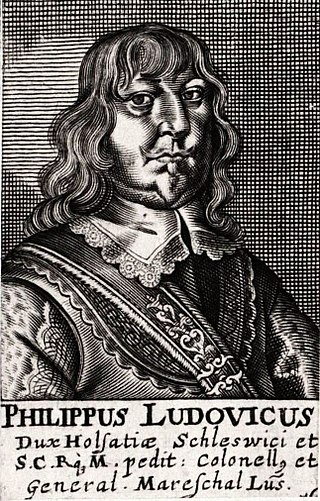
Philip Louis of Schleswig-Holstein-Sonderburg-Wiesenburg was the founder and first duke of the line Schleswig-Holstein-Sonderburg-Wiesenburg. His branch of the House of Schleswig-Holstein-Sonderburg is named after Wiesenburg Castle, near Zwickau.
Anna Margaret of Hesse-Homburg,, was a Landgravine of Hesse-Homburg by birth and by marriage Duchess of Schleswig-Holstein-Sonderburg-Wiesenburg.
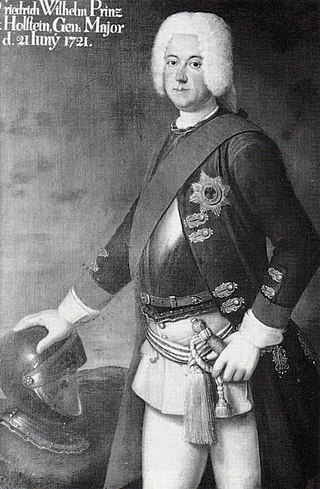
Frederick William II, Duke of Schleswig-Holstein-Sonderburg-Beck was a Duke of Schleswig-Holstein-Sonderburg-Beck. He served as Prussian field marshal and was appointed Governor of Berlin, but never filled the latter position.
Louis Charles, Duke of Schleswig-Holstein-Sonderburg-Franzhagen was a German nobleman and ruler from the House of Schleswig-Holstein-Sonderburg, cadet line of the House of Oldenburg.
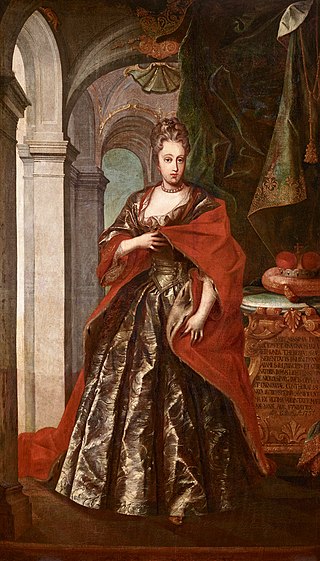
Erdmuthe Maria Theresia of Dietrichstein, was an Austrian noblewoman, Princess of Liechtenstein by marriage to Hans-Adam I, Prince of Liechtenstein.

Frederick of Schleswig-Holstein-Sonderbourg-Wiesenbourg was the 2nd Duke of Schleswig-Holstein-Sonderburg-Wiesenburg and an Imperial Field Marshal.